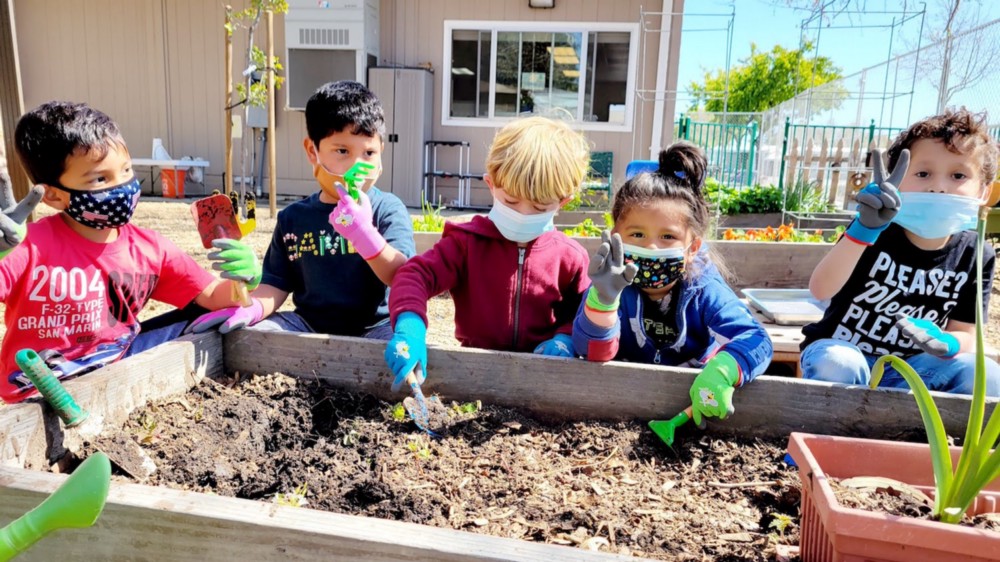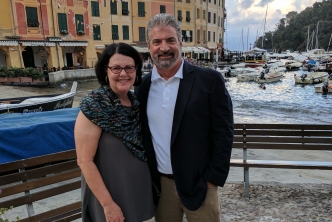
Silicon Valley’s Kids Need Us Now
School’s out, and that leaves educators and families both deeply relieved and very concerned. It’s not news to anyone that the last year and a half tested the patience, technical capacity, and creativity of everyone involved with our schools. For many students, it was a lost year (plus) of learning and social development, and a time of tremendous anxiety. These impacts were particularly acute for those already on the wrong side of the achievement gap. Teachers and administrators exhausted themselves pivoting, patching, and worrying about their students, while grappling with their own family, health, and tech pressures.
As teachers and school districts regroup, donors have the opportunity to take stock and act strategically. Now is the time to help ensure a running start to the new school year, while also seizing the moment to address the systemic issues that created deep educational inequities in Silicon Valley well before COVID wreaked havoc on schools and early childhood programs.
Even before the pandemic, the all-too-familiar “tale of two valleys” was playing out in our schools across income, racial, and ethnic lines. Just 28% of low-income kindergarteners were ready for kindergarten, versus 63% of wealthier children. We saw gaps of 42% between the math proficiency scores of Latino and White students, and suspension rates of Black students four to five times that of White students. And while wealthy public school districts were funding arts and science enrichment programs, schools serving low-income students struggled to pay for basic supplies and compensated their teachers at much lower rates.
When school moved home, tens of thousands of Silicon Valley students struggled to participate from overcrowded homes without reliable internet or quiet study space. (Rightfully) anxious parents who lost their jobs or put themselves in harm’s way daily to work low-wage service jobs stretched to provide their children with attention and support. These students couldn’t retreat with their families to “make the most of remote learning,” or turn to tutors and alternative enrichment programs. Mental wellness plummeted for students everywhere, and particularly for the most marginalized. Data is only now starting to come in, but early indicators suggest that low-income students, students with disabilities, and Black, Latino, Pacific Islander, and Native students all may be lagging almost an additional semester as a result of COVID, especially among the youngest students.
These are Silicon Valley’s kids. We have the opportunity to make the promise of an excellent and equitable public education real for them and help them achieve their highest potential.
In the coming weeks, Magnify will debut an issue brief for donors on educational equity in Silicon Valley. Designed to help donors navigate the complex education landscape and draw inspiration from exemplary local givers, this brief illustrates the multiple entry points for philanthropic dollars to fill gaps, fund innovation, and fuel policy advocacy in a system that goes to the heart of what creates a thriving community.
We’ll highlight key levers for change, including teacher professional development (enhanced by nonprofits like Alder Graduate School of Education), early childhood education (delivered by quality programs like EduCare California at Silicon Valley and The Big Lift), family engagement (promoted by nonprofits like Springboard Collaborative and Grail Family Services); college access, college success, and career preparation programs (such as Pivotal, Boys & Girls Clubs of the Peninsula, and Braven); and policy advocacy (championed by nonprofits like Innovate Public Schools and Children Now).
This is a particularly exciting time to invest in education, because needs and opportunities are converging in an unprecedented way: The pandemic and racial reckoning have shone a spotlight on pre-existing inequities and pressing needs, creating an appetite for change. The struggles with remote learning that affluent donors have experienced with their own children have heightened understanding of the challenges less privileged families face. And an injection of federal and state funds is making some overdue progress possible, like expanded transitional kindergarten, mental health and wellness investments, high-dosage tutoring, and better internet connectivity for students.
These public dollars — it should be noted — are temporary, highly restricted, and require skilled and vigilant on-the-ground nonprofit partners to help ensure that the services they fund can be delivered to those who need it most, and in a way that promotes quality. The tireless advocacy by nonprofits that helped make that funding possible will also be needed to keep the most effective dollars flowing. It’s philanthropy — fast, flexible risk capital — that fuels that nonprofit work, as well as the range of other programs that supplement our public systems and can be scaled through government. In a region with the abundance of Silicon Valley, this is a moment for givers to step up, just as they did during the darkest days of the pandemic, and now we can act together to build something worthy of the promise offered by this valley.
We all need this summer break, but let’s use it to gain our strength, do a bit of summer reading, and get a head start on the work ahead. This assignment is overdue, and our kids can’t wait.
Photo: All Five


